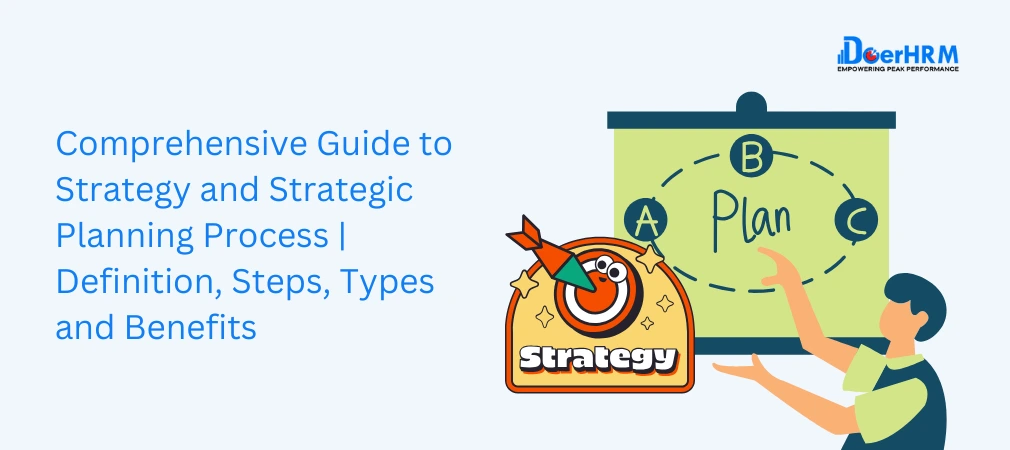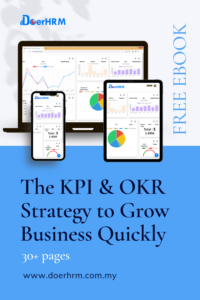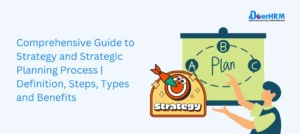Introduction
In today’s fast-paced and competitive business environment, effective strategic planning is crucial for any organization’s success. Strategy and strategic planning help organizations to set clear goals, allocate resources efficiently, and navigate through the complexities of the market. This article delves into the various facets of strategy, strategic planning, and the methods to implement them effectively. We will explore the definitions, processes, and best practices that can empower organizations to achieve their objectives.
Table of Contents
Understanding Strategy
What is Strategy?
Strategy is a comprehensive plan designed to achieve long-term objectives. It involves setting goals, determining actions to achieve those goals, and mobilizing resources to execute the actions. The essence of strategy is making choices that position an organization for sustainable success. A well-crafted strategy considers the external environment, internal capabilities, and stakeholders’ expectations.
Strategic Strategy: A Deep Dive
Strategic strategy encompasses several critical elements that collectively guide an organization towards achieving its long-term objectives. At the core of this process is the Vision and Mission, which defines the organization’s purpose and aspirations, providing a clear and inspiring direction for the future. The vision outlines what the organization aims to become, while the mission describes its fundamental purpose and the primary activities it undertakes. Next, Environmental Scanning is essential for understanding the external and internal factors that impact the organization. This involves analyzing market trends, economic conditions, technological advancements, and competitive dynamics (external factors), as well as evaluating the organization’s strengths, weaknesses, opportunities, and threats (internal factors).
Following this, Goal Setting is crucial as it involves establishing clear, measurable, and achievable objectives that align with the vision and mission. These goals provide specific targets for the organization to strive towards and serve as benchmarks for success. Resource Allocation then comes into play, ensuring that financial, human, and physical resources are distributed efficiently to support these strategic initiatives. Effective resource allocation maximizes the organization’s capabilities and ensures that all departments have what they need to contribute to overarching goals.
Finally, the Execution Plan is developed to outline the specific steps necessary to implement the strategy. This plan includes detailed action items, assigns responsibilities, sets timelines, and establishes monitoring mechanisms to track progress and make necessary adjustments. By meticulously crafting and following this roadmap, organizations can effectively translate their strategic vision into actionable outcomes, driving sustained growth and success.
Strategic Planning
What is Strategic Planning?
Strategic planning is a systematic process that defines the direction an organization will take to achieve its long-term goals. It involves setting priorities, focusing energy and resources, strengthening operations, and ensuring that employees and stakeholders are working towards common goals. Strategic planning also establishes agreement around intended outcomes and assesses and adjusts the organization’s direction in response to a changing environment.
Why is Strategic Planning Important?
Strategic planning is crucial for organizations for several key reasons. Firstly, it provides Clarity and Focus, offering a clear direction that guides the organization’s efforts and aligns all activities with its overarching goals. This clarity helps prevent misalignment and ensures that every team member understands their role in achieving the organization’s mission. Secondly, strategic planning enables Proactive Management, allowing organizations to anticipate future challenges and opportunities rather than merely reacting to them. This forward-thinking approach helps organizations stay ahead of the curve and navigate uncertainties effectively.
Additionally, strategic planning is essential for Resource Optimization. It ensures that financial, human, and physical resources are allocated efficiently, maximizing their use to achieve strategic objectives. By prioritizing initiatives and directing resources where they are needed most, organizations can operate more effectively and avoid waste. Furthermore, strategic planning establishes Performance Measurement metrics, which are crucial for monitoring progress and measuring success. These metrics provide objective data to assess whether the organization is on track to meet its goals and where adjustments may be needed.
Lastly, strategic planning ensures Stakeholder Alignment, bringing all stakeholders—employees, management, investors, and partners—on the same page regarding the organization’s goals and objectives. This alignment fosters a unified effort towards common goals, enhancing collaboration and commitment across the board. By addressing these aspects, strategic planning not only sets the direction for growth but also builds a cohesive, proactive, and efficient organizational environment
Benefits of Strategic Planning
Strategic planning significantly enhances an organization’s effectiveness by contributing to several critical areas. Firstly, it Improves Decision-Making by providing a clear framework that guides leaders in making informed and consistent decisions. This structured approach ensures that choices align with the organization’s long-term objectives and strategic priorities. Secondly, strategic planning Enhances Organizational Performance by aligning resources and efforts towards achieving defined goals. By clearly outlining what needs to be accomplished and how, it ensures that all departments and team members are working in harmony towards the same objectives, thereby optimizing efficiency and effectiveness.
Moreover, strategic planning Increases Adaptability by preparing the organization to respond swiftly to changing market conditions. By anticipating potential challenges and opportunities, organizations can pivot their strategies proactively, maintaining resilience and flexibility in a dynamic environment. Involving employees in the planning process also Engages Employees, fostering a sense of ownership and clarity regarding their roles and contributions. This involvement boosts morale, motivation, and productivity, as employees understand how their work fits into the bigger picture.
Lastly, strategic planning provides a Competitive Advantage by helping organizations identify and leverage unique opportunities in the marketplace. Through thorough analysis and strategic foresight, organizations can develop distinctive capabilities and initiatives that set them apart from competitors. Overall, strategic planning not only steers the organization towards its goals but also builds a robust foundation for sustained growth and competitive success.
Related Articles: KPIs that Team Leaders Must Have If They Want To Create Winning Teams
The Strategic Planning Process
The strategic planning process is a comprehensive method that can be broken down into several key steps, each critical for achieving organizational success. It begins with Assessment, where the current situation is evaluated using a SWOT analysis to identify the organization’s Strengths, Weaknesses, Opportunities, and Threats. This step provides a clear understanding of the internal and external factors that can impact the organization. Next is the Vision and Mission Development, where the organization clarifies its purpose and articulates a desired future state. This step is essential for setting a clear and inspiring direction that aligns with the organization’s core values and long-term aspirations.
Following this, the process involves Goal Setting, where specific, measurable, attainable, relevant, and time-bound (SMART) objectives are defined. These goals provide clear targets for the organization to aim for, ensuring that efforts are focused and aligned. Once the goals are set, the next step is Strategy Formulation, which involves developing detailed strategies to achieve these objectives. This step requires careful consideration of various strategic options and the selection of the most effective approaches.
The Implementation phase comes next, where resources are allocated, and responsibilities are assigned to execute the strategies. This step is crucial for translating plans into action, requiring coordination and commitment across the organization. Finally, the Monitoring and Evaluation step involves tracking progress, measuring performance against the set objectives, and making necessary adjustments to stay on course. Continuous monitoring ensures that the organization remains responsive to changes and can adapt strategies as needed to achieve its goals. Through these steps, the strategic planning process provides a structured approach to navigating the complexities of organizational growth and success.
As explained by Investopedia, the strategic planning process helps businesses set objectives, allocate resources, and evaluate progress systematically.
Related Articles: D.O.P.E Personality Test
Who Does the Strategic Planning in a Business?
Strategic planning is a collaborative process that involves senior management and key stakeholders within the organization to ensure a comprehensive and effective approach. The Executive Team, which includes CEOs, COOs, CFOs, and other top executives, plays a pivotal role by providing strategic direction and making high-level decisions that shape the future of the organization. These leaders leverage their experience and vision to set the overall course and prioritize initiatives that align with the organization’s long-term goals. Middle Management is crucial in translating these strategic plans into actionable operational steps. Managers bridge the gap between strategy and execution, ensuring that day-to-day activities support the overarching objectives and that their teams are aligned and motivated to achieve them.
The Board of Directors offers critical oversight, ensuring that the strategic plans are in line with the organization’s vision and mission. Their role is to provide governance, challenge assumptions, and validate that the proposed strategies will effectively guide the organization towards its desired future state. Moreover, involving Key Stakeholders—such as employees, customers, suppliers, and partners—is essential for gaining valuable insights and feedback. These stakeholders bring diverse perspectives and firsthand experiences that can highlight potential opportunities and challenges that might not be evident from a purely internal viewpoint. By engaging these groups, the strategic planning process becomes more robust, inclusive, and attuned to the needs and expectations of those it aims to serve and support. This collaborative effort ensures that the strategic plan is not only visionary but also practical and grounded in real-world considerations.
How Often Should Strategic Planning Be Done?
Strategic planning should be viewed as an ongoing process rather than a one-time event, ensuring that the organization remains agile and responsive to both internal and external changes. However, formal strategic planning sessions are typically conducted at specific intervals to maintain a structured approach. Annually, organizations hold comprehensive reviews to update the strategic plan based on the previous year’s performance metrics, achievements, and any significant changes in the external environment. This annual review allows for a thorough reassessment of goals, strategies, and resource allocations, ensuring that the strategic direction remains relevant and effective.
In addition to the annual review, Quarterly sessions are essential for monitoring progress and making necessary adjustments. These more frequent check-ins enable the organization to track the implementation of strategic initiatives, measure interim results, and address any emerging issues promptly. Quarterly reviews ensure that the organization stays on course and can adapt strategies to align with short-term developments and operational realities.
Furthermore, strategic planning must be flexible enough to accommodate As Needed sessions in response to significant changes or unforeseen events that impact the organization. These could include market shifts, economic downturns, competitive threats, regulatory changes, or internal disruptions such as leadership changes. By incorporating this responsive approach, the organization can swiftly recalibrate its strategies to mitigate risks and capitalize on new opportunities.
Overall, maintaining an ongoing strategic planning process with scheduled reviews and the flexibility to respond to unexpected changes ensures that the organization remains proactive, resilient, and aligned with its long-term vision and mission. This dynamic approach to strategic planning fosters continuous improvement and sustained success.
Related : KPI Performance Management Malaysia
Types of Strategic Plans
Strategic plans can be categorized into several types based on their focus and scope, each serving a distinct purpose within the organization. Corporate Strategy is the highest level of strategic planning and focuses on the overall direction of the organization. It encompasses growth strategies, which might involve expanding into new markets or acquiring other businesses; stability strategies, which aim to maintain the current market position; and retrenchment strategies, which might involve downsizing or restructuring to improve efficiency. This level of strategy sets the overarching goals and provides a framework within which all other strategies operate.
Business Unit Strategy is more granular and pertains to individual business units within the organization. This type of strategy is concerned with how each unit will compete effectively in its specific market. It involves making decisions about product offerings, market positioning, and competitive tactics to achieve a sustainable competitive advantage in that particular segment.
Functional Strategy dives deeper into specific functional areas such as marketing, finance, operations, human resources, and research and development. Each functional strategy outlines how the department will support the overall business strategy. For instance, a marketing strategy might focus on brand development and market penetration, while a finance strategy might emphasize cost management and capital allocation.
Lastly, Operational Strategy deals with the day-to-day operations of the organization. It ensures that all operational activities are aligned with broader strategic objectives. This includes managing production processes, supply chain logistics, quality control, and other aspects of operational efficiency. By aligning operational tasks with strategic goals, organizations can ensure that daily activities contribute to long-term success.
In summary, these different types of strategic plans—corporate, business unit, functional, and operational—work together to ensure that every level of the organization is aligned with its long-term vision and objectives. Each type of strategy addresses specific aspects of the organization’s operations, from high-level direction to day-to-day execution, creating a cohesive and comprehensive approach to achieving sustained success.
Strategic Management
What is Strategic Management?
Strategic management is the comprehensive process of formulating, implementing, and evaluating strategies to achieve organizational goals. It involves continuous assessment and adjustment of the organization’s strategy based on internal and external factors. Strategic management ensures that the organization remains aligned with its vision and mission while adapting to changes in the environment.
Strategic Planning Strategies
Effective Strategic Planning Strategies
To ensure successful strategic planning, organizations can adopt various strategies that collectively enhance their capacity to achieve long-term goals and navigate complex business environments. One such strategy is the Balanced Scorecard, a comprehensive framework that translates an organization’s vision and strategy into a set of measurable performance indicators across four key perspectives: financial, customer, internal business processes, and learning and growth. This holistic approach ensures that strategic objectives are aligned with day-to-day operations and long-term goals. Another effective strategy is Scenario Planning, which involves exploring and preparing for multiple potential future scenarios. By anticipating various challenges and opportunities, organizations can develop more robust plans and improve their resilience against unforeseen changes.
Benchmarking is also crucial, as it entails comparing the organization’s performance against industry standards or best practices. This comparative analysis helps identify areas where the organization can improve and adopt strategies that have been successful elsewhere. Forming Strategic Alliances is another powerful strategy. By partnering with other organizations, companies can leverage complementary strengths, share resources, and pursue common objectives more effectively than they could alone.
Finally, Innovation Management is essential for maintaining competitiveness. By fostering a culture of innovation and effectively managing new ideas, organizations can continuously adapt to market changes and meet evolving customer needs. Collectively, these strategies provide a robust foundation for successful strategic planning and execution.
Strategy and Strategic Planning
Integrating Strategy with Strategic Planning
Effective integration of strategic planning with the overall strategy is crucial for its success in driving organizational growth and achievement. This alignment ensures that strategic planning transcends being a mere administrative task to becoming a powerful instrument that propels the organization forward strategically. Key steps to achieve this integration involve several critical elements.
Firstly, Clear Communication is essential. It is vital to articulate the organization’s vision, mission, and strategic goals clearly and consistently throughout all levels of the organization. This clarity ensures that every member understands the overarching purpose and direction, fostering alignment and commitment to the strategic objectives.
Secondly, Engagement of key stakeholders is paramount. Involving stakeholders such as senior executives, department heads, employees, customers, and external partners in the strategic planning process is crucial. Their involvement brings diverse perspectives, insights, and buy-in, enhancing the quality of strategic decisions and fostering a sense of ownership in the outcomes.
Thirdly, Flexibility is vital in strategic planning. Organizations must be prepared to adapt their strategies and plans in response to evolving internal and external dynamics. Flexibility allows for agility in decision-making, enabling the organization to capitalize on emerging opportunities and mitigate potential threats effectively.
Establishing Performance Metrics, such as key performance indicators (KPIs), is another critical step. These metrics provide benchmarks against which progress can be measured and evaluated. Clear KPIs enable leaders to track performance, identify areas needing improvement, and celebrate successes, thereby ensuring accountability and alignment with strategic goals.
Lastly, Continuous Improvement is essential to maintain the relevance and effectiveness of strategic plans over time. Regular reviews and refinements of the strategy and plans allow organizations to respond proactively to changing market conditions, technological advancements, and competitive pressures. This iterative process of improvement ensures that the organization remains adaptive and resilient in achieving its long-term objectives.
By integrating these key steps into the strategic planning process, organizations can harness the full potential of strategic planning as a dynamic and strategic tool for navigating complexities, fostering innovation, and achieving sustainable growth.
What is a Strategy Map?
A strategy map is a visual representation of an organization’s strategic objectives and the cause-and-effect relationships between them. It is typically part of the Balanced Scorecard framework and helps to communicate the strategy clearly across the organization. Strategy maps outline how various objectives in different perspectives (financial, customer, internal processes, learning, and growth) are interconnected and contribute to the overall vision and mission.
For more insights on strategic planning frameworks and best practices, check out Harvard Business Review.
Conclusion
Effective strategy and strategic planning are vital for the long-term success of any organization. By understanding the principles of strategy, engaging in comprehensive strategic planning, and adopting effective strategies, organizations can navigate complexities, seize opportunities, and achieve their goals. Whether through a balanced scorecard, scenario planning, or strategic alliances, the key is to remain agile, informed, and focused on the desired outcomes.
At DoerHRM, we believe that strategic planning is not just a task but a continuous journey that requires commitment, foresight, and collaboration. By leveraging our expertise and tools, organizations can enhance their strategic capabilities and drive sustainable growth.











